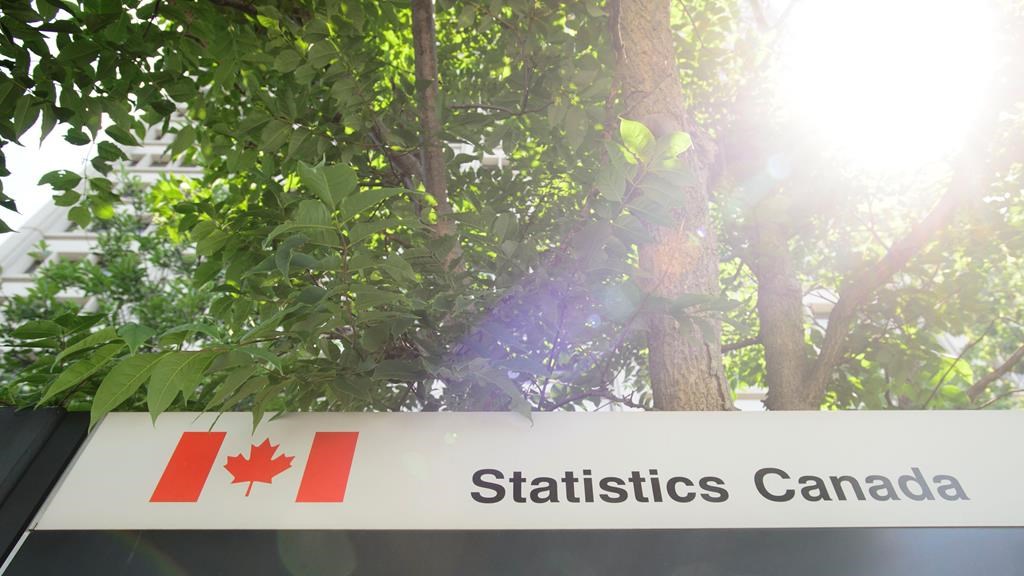Economists see Bank of Canada holding on rates after surprise GDP contraction

OTTAWA — Economists say the latest GDP data from Statistics Canada showing a contraction in the economy suggests the Bank of Canada’s rate hiking campaign may be coming to an end.
The Canadian economy appeared to stall in the second quarter as investment in housing continued to fall, led by drop in new construction. The economy contracted at an annualized rate of 0.2 per cent in the second quarter, Statistics Canada reported, far weaker than forecasters had expected.
The decline in the second quarter came as housing investment fell 2.1 per cent to post its fifth consecutive quarterly decrease. New construction dropped 8.2 per cent in the quarter, while renovation spending fell 4.3 per cent.
Advertisement
The drop in spending came as Canadians face higher borrowing costs fuelled by interest rate hikes by the Bank of Canada, which is trying to bring inflation back to its target of two per cent.
Tu Nguyen, an economist with accounting and consultancy firm RSM Canada, said the cooling economy should be enough evidence for the central bank to forgo further rate hikes unless there is another major external shock that sends inflation upward.
“The bank’s goal is eventually to restore price stability, to taper an overheated economy. Their goal is not to incur a recession. So it looks like the bank is achieving their goal,” she said.
“They’re certainly going to continue monitoring the data because there has been quite a lot of noise. The reason why I’m fairly confident that this is the end of it is we don’t expect spending to really go up towards the end of the year.”
Nguyen said this is the first time since the early days of the pandemic that spending on services did not grow, which she noted is a powerful signal of a cooling economy. This, despite household savings going up, suggests “people actually have more money in their pockets but they’re choosing to save it and not spend it because they’re anticipating a recession.”
Advertisement
The Bank of Canada’s next interest rate decision is set for next week.
The central bank raised its key interest rate by a quarter of a percentage point to five per cent in July as it said it remained concerned that progress toward its two per cent inflation target could stall.
Nguyen predicted the Bank of Canada likely won’t cut rates until at least April 2024.
“The bank needs to see sustained evidence of inflation going at least towards two per cent. It probably won’t get to two per cent until 2025 but it needs to stay below three per cent for long enough,” she said.
“If the bank cuts rates too early, it’s encouraging businesses and households to go out and borrow again, sort of heating up the economy again, and we really need a period of cooling down.”
Advertisement
Statistics Canada also revised its reading for growth in the first quarter to an annual pace of 2.6 per cent, down from 3.1 per cent.
“The surprise contraction in second-quarter GDP leaves little doubt that the Bank of Canada will keep interest rates unchanged next week,” wrote Stephen Brown, deputy chief North America economist for Capital Economics, in a note to clients.
“With the fall in monthly GDP in June and the apparent stagnation in July setting a weak foundation for the third quarter, the Canadian economy may already have fallen into a modest recession.”
The weakness in the second quarter was also attributed to lower inventory accumulations, as well as slower growth in exports and household spending.
Exports of goods and services crept up 0.1 per cent in the second quarter compared with a 2.5 per cent increase in the first quarter.
Advertisement
Growth in real household spending slowed to 0.1 per cent in the second quarter compared with 1.2 per cent in the first quarter.
Meanwhile, business investment in non-residential structures gained 2.4 per cent in the second quarter, boosted by a 3.3 per cent gain in spending on engineering structures.
The overall pullback in the second quarter came as the economy contracted by 0.2 per cent in June.
Services-producing industries dropped 0.2 per cent in June, while goods-producing industries contracted 0.4 per cent for the month.
Statistics Canada also said its early estimate for July suggested real GDP was essentially unchanged for the month, though it cautioned the figure would be updated.
Advertisement
This report by The Canadian Press was first published Sept. 1, 2023.
The Canadian Press